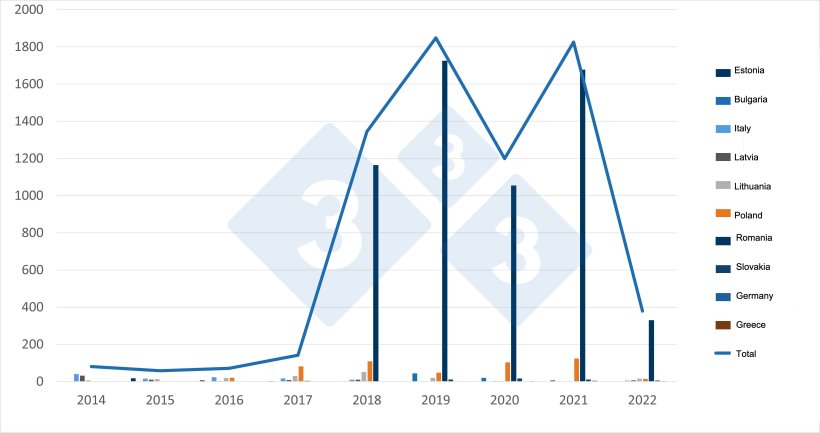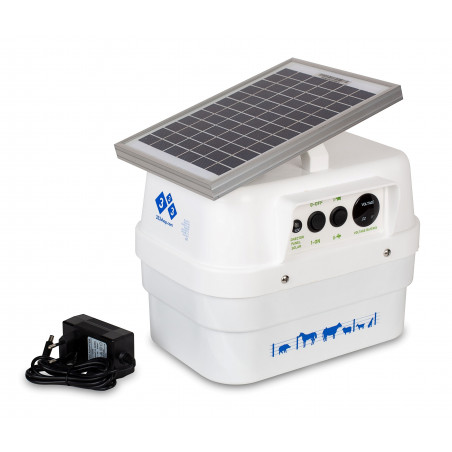Since the first occurrence of African swine fever (ASF) in the European Union in 2014, last year was the first year in which cases of the disease in wild boar decreased, from 12,076 cases in 2021 to only 7,282 in 2022, representing a 40% reduction.
In domestic pigs, after a dramatic increase in 2018, there was a decrease in cases in 2020 compared to 2019 (-35%). Cases increased again in 2021 (+52%) and decreased by almost 80% in 2022, from 1,826 cases to 379.

In relation to cases in wild boar, Poland continued to be the country where most cases were reported with 2,152, although down 33%. Germany was in second place with 1,628 cases, albeit down 36% from the previous year. Cases also fell significantly in Hungary (-79%) and Slovakia (-67%). In Estonia, cases have been progressively declining since 2017, with only 57 confirmed cases in 2022. In contrast, cases increased in Latvia (+148%), Lithuania (+24%), Bulgaria (+22%), and Italy (+1747%). It should be noted that Italy had only reported cases on the island of Sardinia, where the disease is endemic, but in January 2022 the disease jumped to the north of the country, with 277 cases confirmed. Also noteworthy is the situation in the Czech Republic where a case was confirmed after more than 4 years without the presence of the disease.

Evolution of ASF cases in wild boar in the EU. Source: 333 based on ADIS data.
In terms of cases in domestic pigs, Romania continued to be the country with by far the most confirmed cases, 329, although these decreased by 80% compared to the previous year. Another country with the highest number of cases was Poland, which in 2021 had 124 cases and in 2022 confirmed only 14, a drop of almost 90%. The rest of the countries with ASF in domestic pigs reported 2 to 6 confirmed cases per country.

ASF cases in domestic pigs in the EU. Source: 333 based on ADIS data.
For more information on a global level see our interactive map of ASF outbreaks..
January 17, 2023/ 333 Staff with data from ADIS.




















